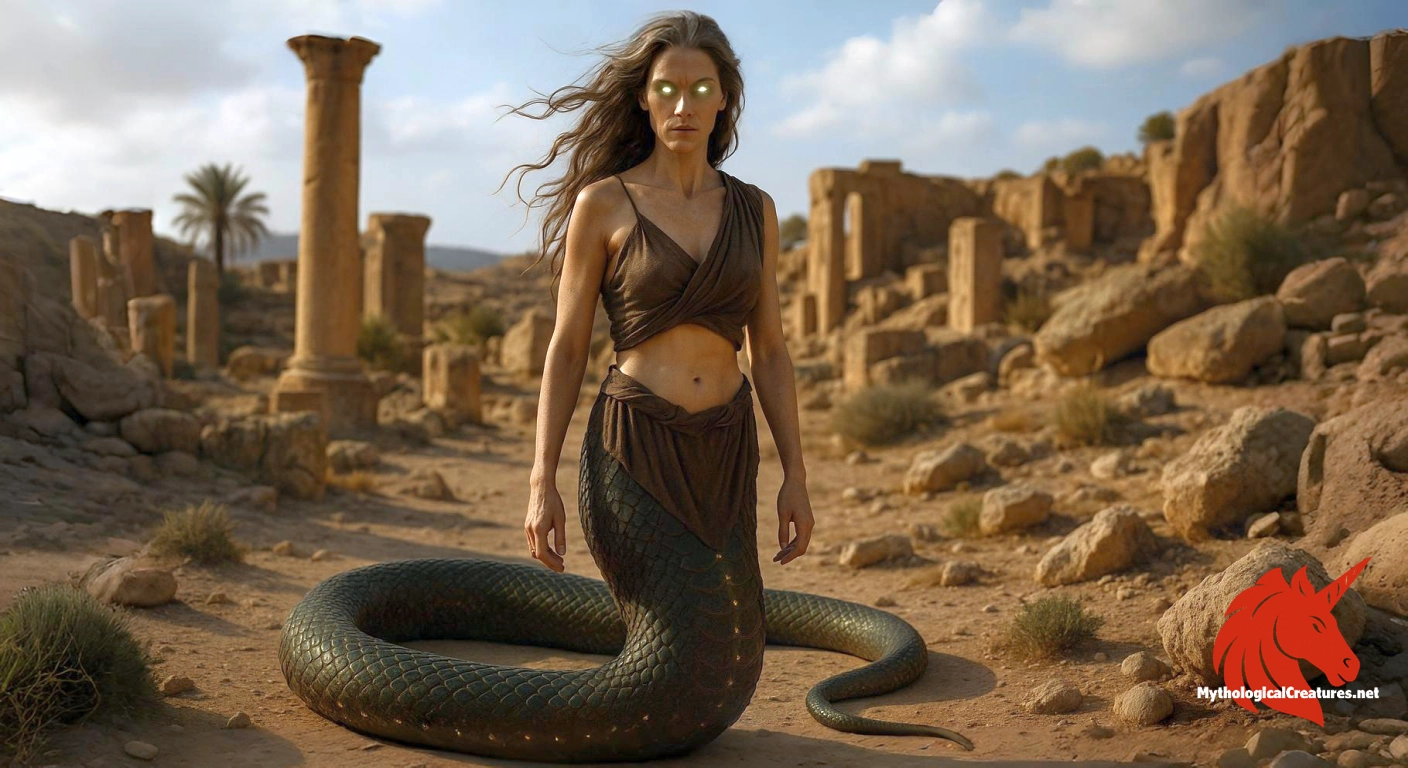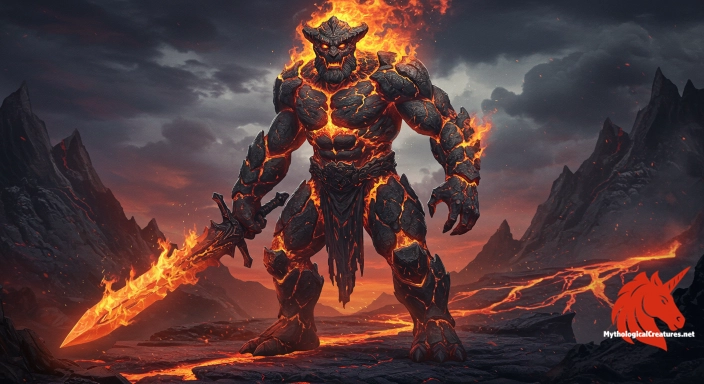Lamia: Lamia is a fearsome, tragic figure from Greek mythology, once a beautiful queen whose life was marred by divine retribution and transformation into a monstrous child-eater.

Lamia
Lamia - Serves as a cautionary figure and symbol of maternal loss, divine retribution, and the horrors of obsession in Greek mythology.
Origins & First Encounters
Lamia stands as one of the most complex figures in ancient lore, a creature born of divine passion and tragic retribution. Originally depicted as a radiant Libyan queen whose allure captivated the gods, her myth first emerged in the echoing halls of Greek mythology. A fateful liaison with Zeus set events in motion that led to Hera’s vengeful intervention and the loss of her beloved children. The ensuing grief and madness transformed her from a celebrated beauty into a monstrous spectre, forever tormented by her loss. This transformation underscores a recurring theme in myth: the interplay between divine favour and catastrophic curse. Early narratives emphasise both her doomed romance and the profound sorrow that lays at the heart of her transformation. As her story was passed down through generations, Lamia became a symbol of the dangers of hubris and the inescapable consequences of divine jealousy. Her dual nature—as both a seductress and a night-haunting daimon—continues to fascinate and unsettle audiences, serving as a cautionary tale of love, loss, and vengeance. Her myth encapsulates the inevitable decline from beauty to horror, reflecting the fickle nature of the gods and the cost of crossing divine boundaries. In the cultural context of ancient Greece, Lamia thus embodies the tragic consequences that arise from mortal entanglements with immortal forces.
Source Texts & Tale Variants
The earliest literary references to Lamia are woven through the rich tapestry of Greek myth, where her legacy is recounted in fragments and allegories that have survived through time. Ancient poets and dramatists portrayed her as a figure of both seductive allure and profound tragedy. In some accounts, her story is interlaced with prophetic elements, a gift bestowed by Zeus amidst the chaos of her curse, adding layers to her narrative. Some classical texts depict her as a vengeful spectre whose actions serve as an eternal reminder of divine retribution. Variations of her tale appear in scattered works by later authors, blending the archetype of the child-eating monster with that of a tormented soul. The account of Apollonius of Tyana’s encounter with a lamia-seductress notably influenced later literary treatments, such as John Keats’s evocative poem "Lamia." Other sources, including fragments attributed to philosophers and historians like Dio Chrysostom, hint at her serpentine features and the unsettling duality of her nature. Oral traditions and folklore further enriched her myth, often blurring the lines between historical narrative and cautionary tale. These diverse sources, though fragmented, collectively outline a multifaceted character whose story has been retold and reshaped across generations.
Form & Powers
In the earliest depictions, Lamia is described as possessing a mesmerizing beauty that gradually gives way to a terrifying visage as her curse takes effect. Her features, once soft and alluring, contort into an expression of eternal anguish and monstrous deformity. Some accounts portray her with serpentine traits—a lower body or elongated limbs that hint at the scales and coils of a serpent. The transformation is so profound that her eyes, said to be removable and reinsertable, mark a physical manifestation of her internal torment. In various artistic renditions, she is depicted with wild, tangled hair and a pallor that speaks of sleepless nights and ceaseless mourning. Her face, at times, retains a hint of her former beauty, only to be overshadowed by a terrifying air of madness and despair. The dichotomy between delicate human features and reptilian, scaled elements is highlighted in many visual representations, underlining her hybrid nature. Different sources offer slight variations in her size, with some describing her as a towering presence while others present her as unnervingly small and stealthy. This evolution in her depiction underscores not only the physical consequences of her curse but also the symbolic fragmentation of her identity. Overall, her form becomes a living testament to the interplay between allure and revulsion.
Regional Faces
Throughout the Mediterranean and beyond, interpretations of Lamia have varied significantly, adapting to local beliefs and cultural narratives. In Greece, for example, her image morphed into that of a bogeyman whose very name would instil fear in wayward children. Elsewhere in the ancient world, regional storytellers imbued her with additional layers of mystique, emphasising her role as a nocturnal predator preying on the vulnerable. In areas influenced by the broader Greco-Roman tradition, her character mingled with other night-haunting spirits and female demons, forming a composite figure of erotic danger and maternal tragedy. As the myth travelled across borders, some cultures accentuated her seductive powers, portraying her as a temptress who lured unsuspecting men into deadly embraces. Meanwhile, oral traditions in certain regions recast her narrative to serve as a moral warning against defiance and the breaking of social taboos. Local adaptations also sometimes trimmed the grimmer details of child devouring, instead focusing on her spectral presence and eerie, wandering apparitions. Such regional variations reflect the dynamic nature of myth, where each culture adapts a narrative to reflect its own fears, values, and social norms. Consequently, Lamia’s legend is as diverse as the communities that have embraced her story over the centuries.
Cultural Parallels
The figure of Lamia finds echoes in numerous mythological traditions, revealing a tapestry of cross-cultural motifs and archetypes. Similar to other night-haunting entities such as the empusai in Greek lore, Lamia embodies a fusion of seduction and horror that recurs in countless narratives. Parallels can be drawn with the vampiric legends of Eastern Europe, where alluring yet deadly female spirits prey on the living under the cover of darkness. In Mediterranean folklore, the figure of the Coco, used to frighten children, shares with Lamia a role as an enigmatic boogeyman that enforces behavioural codes. These cultural analogues underscore a universal fascination with transformations—from beauty into beast—which serve as allegories for inner corruption or the scars of tragedy. Comparatively, the archetype of the fallen goddess or cursed seductress appears in many cultures, reinforcing themes of maternal loss, divine punishment, and the ambiguity of power. Literary reinterpretations often highlight the duality of such figures, offering a complex portrait of a woman both victimised and vengeful. This convergence of similar motifs across disparate cultures points to a common human preoccupation with the dangers of unchecked desire, the impact of divine retribution, and the thin line that divides beauty from monstrosity. In this light, Lamia serves not only as a singular mythic character but also as a bridge connecting varied traditions steeped in similar existential anxieties.
Legacy & Modern Evolution
Over the centuries, the depiction of Lamia has evolved dramatically, mirroring the shifting landscapes of artistic and social expression. In the classical era, her story was recounted as a cautionary tale of divine retribution and the tragic consequences of mortal transgression. With the passage of time, her narrative underwent further metamorphosis, transforming from a simple monster into a rich symbol of maternal grief and forbidden desire. Modern interpretations, notably in literature and art, often cast her as an ambiguously tragic figure, evoking both empathy and horror. The celebrated poem "Lamia" by John Keats exemplifies this modern reimagining, blending elements of romance with the inherent dark mystique of her character. Contemporary adaptations in film, graphic novels, and theatre have further redefined Lamia by exploring themes of identity, transformation, and the conflict between the human and the monstrous. In modern psychological and feminist readings, she is sometimes depicted as an archetype of female empowerment and the painful costs of societal punishment. Her enduring presence in popular culture continues to inspire reinterpretations that explore the intricate interplay of beauty, loss, and vengeance. As myths are reassembled to resonate with modern audiences, Lamia persists as a timeless emblem—a tragic figure forever suspended between divine favour and eternal damnation. Her legacy is a testament to the enduring power of myth to evolve and reflect the anxieties and aspirations of each new era.
Interesting Fact
A unique aspect of Lamia’s myth is her ability to cyclically remove and reinsert her eyes, symbolising an eternal, restless gaze that haunts the night.
Quick Creature Info
Origin:
Our Mythic Legendary Rating:

Also Sometimes Known As:
Habitat:
Supernatural Powers:
Physical Attributes:
Abilities:
Behavior:
Weaknesses:
Lore:
References
Discover Another Mythical Legend You May Not Have Heard Of?
Uncover the mysteries of ancient folklore and expand your knowledge of legendary beings from cultures around the world.
Dare to Meet the Surtr....
Mythical Disclaimer: The images and data on this site are derived from various historical and literary sources, but we have found that many myths often have multiple versions and interpretations across references, sometimes contradictory. As a result, these creature depictions are artistic interpretations—imaginative blends of folklore, legend, and a dash of AI guesswork. Because creature descriptions vary widely, our illustrations and accompanying information represent our best effort to honor mythology while bridging creative gaps. Enjoy these interpretations—just remember, we've done our best to respect the stories and validate available data, but in the realm of mythology, details often shift, imagination leads the way, and nothing is ever set in stone!
Curated by the Mythological Creatures Team (rev. May 2025)
